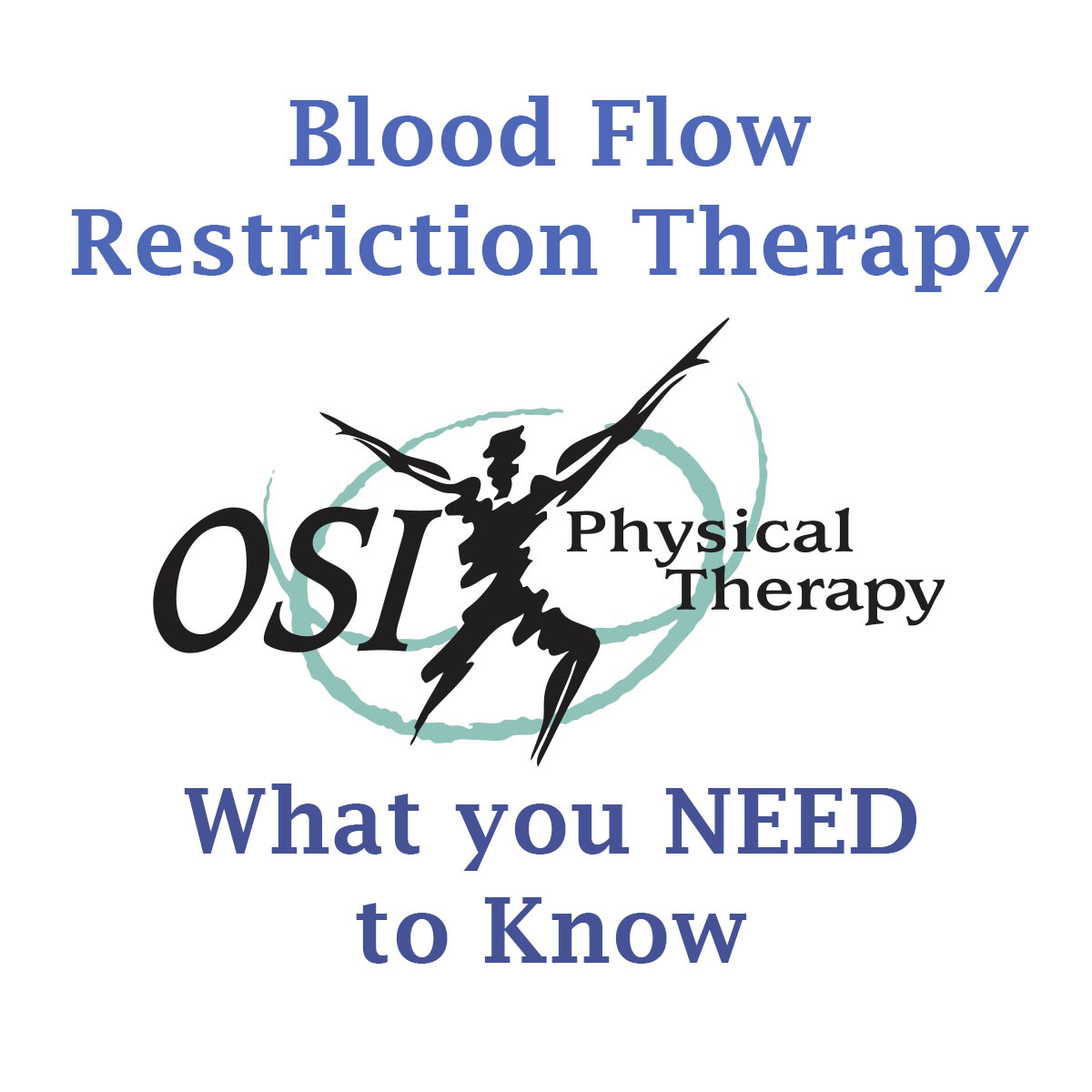
Short answer: a way to increase muscle size and strength without lifting heavy objects. Blood flow restriction therapy is a newer tool that is used in rehabilitation settings that utilizes a pressurized cuff to restrict blood flow in your veins. That piece of information is important, it is NOT complete occlusion of all blood flow, just your veins. In other words, your body is still able to circulate blood to your limbs, but the return is slowed. That slowing of blood flow/return is the key to BFR (we will talk about this later). Additionally, while there are only two areas that are safe to place the cuffs (high up on the arm or high up on the leg) this tool can be used to produce positive changes throughout the entire body.
Muscles can hypertrophy (or enlarge) in response to two forms of stress. One is mechanical stress, aka lifting heavy things and putting them down. The other is metabolic stress. This is where BFR comes into play. BFR training/therapy induces an environment of metabolic stress due to the restriction of venous blood flow (blood flow going from your limb back to your body) where your body starts to create hormones that are responsible for not only muscle growth but also blood vessel production (short term restriction leads to long-term improved blood flow). In a sense, BFR tricks your body into thinking it needs to make your muscles bigger and grow more blood vessels WITHOUT doing heavy lifting.
Traditional strength training is AWESOME. Whenever you can lift heavy things and put them down you should do it. The benefits of strength training are endless: increased metabolism for weight loss, improved energy/mood, increased capacity to perform daily activities with ease, improved joint health, improved muscle health, etc. etc. However, when you cannot lift due to injury or pain, BFR can be used as a tool to get you from point A to point B (lifting heavier things). The reason BFR can do this, is because with BFR protocols you are lifting little to no weight, often times just lifting your limbs or contracting your muscles isometrically is enough to induce a change. And because you are lifting little to no weight you won’t flare up that painful joint/muscle and furthermore you will not experience delayed onset muscle soreness or DOMS that can leave you sore for days. In fact, it only takes ~3-5 minutes to recover from a BFR session (typically 6-12 minutes) and you should not experience soreness for the rest of the day or the next day.
The short answer to this question….everyone! Anyone who cannot tolerate traditional therapies or strength training is appropriate for this type of therapy. BFR is GREAT post-operatively to induce muscle change/adaptation for those that due to post-operative restrictions cannot lift weight. Additionally, it is also great for those that are battling with arthritis, tendinitis, tendinopathy, patellofemoral pain and rotator cuff strains/sprains.
BFR will be offered across many OSI practices, call (651) 275-4706 to find out which one of our great therapists you can see!
Thank you for reading!
Greg Bailen, PT, DPT, OCS, MTC, Cert.CMFA, Cert.MST, CSCS
FREE PHONE CONSULTATION: (651) 275-4706